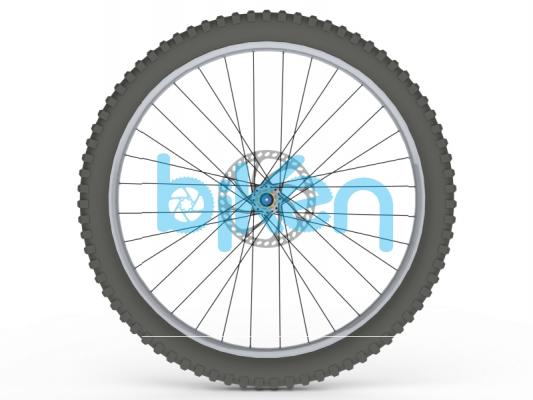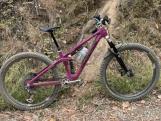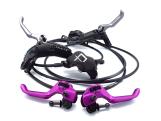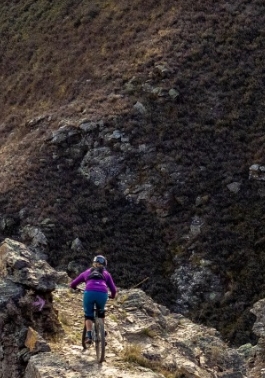You have no items in your shopping cart.
Wheel Building
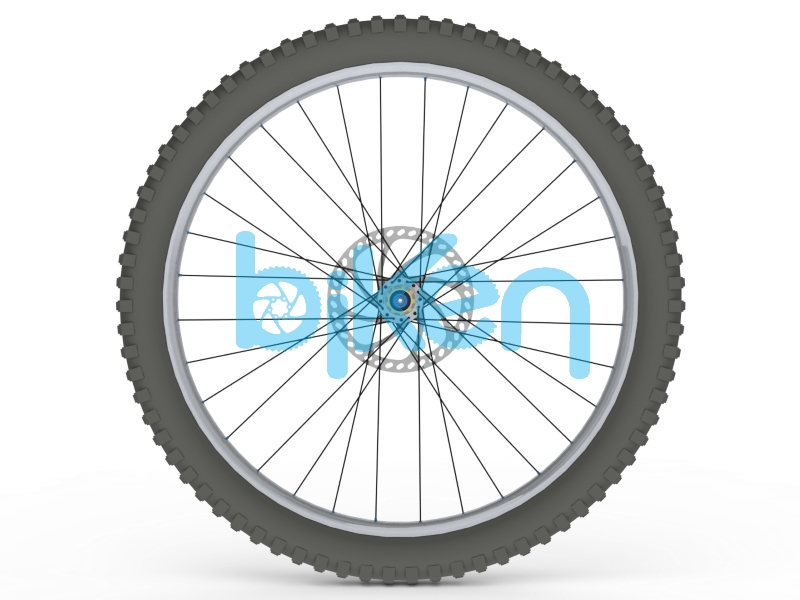 Wheels are everywhere. Every unicycle has one and every bicycle has two.
Wheels are everywhere. Every unicycle has one and every bicycle has two.
From the outside they're simple: a hub, a rim and wire spokes holding them all together and apart. But from there the options start to expand like a scene from The Matrix.
Hubs can vary in axle size, freehub type, spoke attachment and spoke count.
Spokes can be straight pull or J-bend, Butted or Straight Gauge and black or silver.
Nipples can be brass or aluminium alloy, coloured or plain.
Rims can be aluminium or carbon, any width, any colour, rim or disc brake, tubeless or tubed.
So where do you start?
1 Start with Fitment
• Your rim diameter and hubs have to match your frame and fork.
• Measure axle width and diameter, front and rear.
• Check tyre sidewalls for wheel size. Metric sizing is the rim bead diameter: 559 mm for 26", 584 mm for 27.5/650B etc.
2 Decide on Rims
• Carbon vs Alumiminium Alloy.
• Decide on width. Wider holds fatter tyres better but is damaged more easily.
• Tubeless ready hold tyres more securely for running with tubeless rim tape and sealant.
3 Choose the Correct Freehub
• Until recently everything used a Shimano Hyperglide (HG) freehub, fitting 8-11 gears with smallest being 11T.
• SRAM introduced XD drivers for Eagle 11 and 12sp. They can fit a 10T small cog.
• Shimano introduced MS microspline for 12sp. They can also fit a 10T small cog but are not compatible with XD.
4 Lacing Patterns
• Spokes can only be radial (straight out with no crossing) on front wheels with no hub brakes. All others need spokes to cross and oppose each other to resist hub torque.
• The more crosses you have, up to a maximum, the better the hub resists torque.
• Maximum crosses is 3x for 32 spoke wheels, 4x for 36 spokes.
• Smaller wheels literally run out of room but also deal with less torque. 1-2x can be fine.
5 Straight Pull Spokes vs J Bend
• Straight pull spokes have advantages and disadvantages over traditional J-bend spokes.
• Straight pull spokes are stronger, but they need to be as they meet the hub at a smaller radius so loadings are higher.
• Straight pull spokes are more difficult to source, but easier to replace if one is damaged.
• Straight pull spokes can keep rotating during building/truing, making the job more difficult.
6 Spoke Count
• Spoke counts range from 18-72 per wheel. Most common for MTB is 32 with 28 gaining fast.
• More spokes make a stiffer and stronger but heavier wheel.
• Most of the time rim and hub availability makes this decision for you.
7 Spoke Nipples
• Brass is the traditional material. It is tough and doesn't corrode much. It's usually zinc plated silver, sometimes black.
• Aluminium is lighter, softer and comes in far more colour choices.
• Do not use aluminium nipples in carbon rims. The carbon will make the aluminium corrode. Use brass.
What Do We Recommend?
We recommend aluminium rims (so they can be recycled) with flanged hubs and 32 J-bend spokes for most applications, double butted spokes where you can get them (some sizes you can't).
Brass nipples for beginner wheelbuilders and alloy for those experienced and looking for something light and shiney.If you are running tyres 2.8" you'll want 35 mm rims, 2.6" wide you can run rims 30-35 mm wide. If you're running 2.3" tyres then 25-35 mm wide rims is a good range.
Most reliable spoke pattern is 3x. We use 2x for 20" wheels due to space constraints.
Dry chain lube is very good for lubricating the spoke threads during assembly. If you don't want to run tubeless then electrical tape works well for rim-tape.
There are a thousand opinions on the process and intricacies of wheel-building. We have our own but not the time or space to lay them all out.
Here is a good guide from Sheldon Brown: https://sheldonbrown.com/wheelbuild.html



